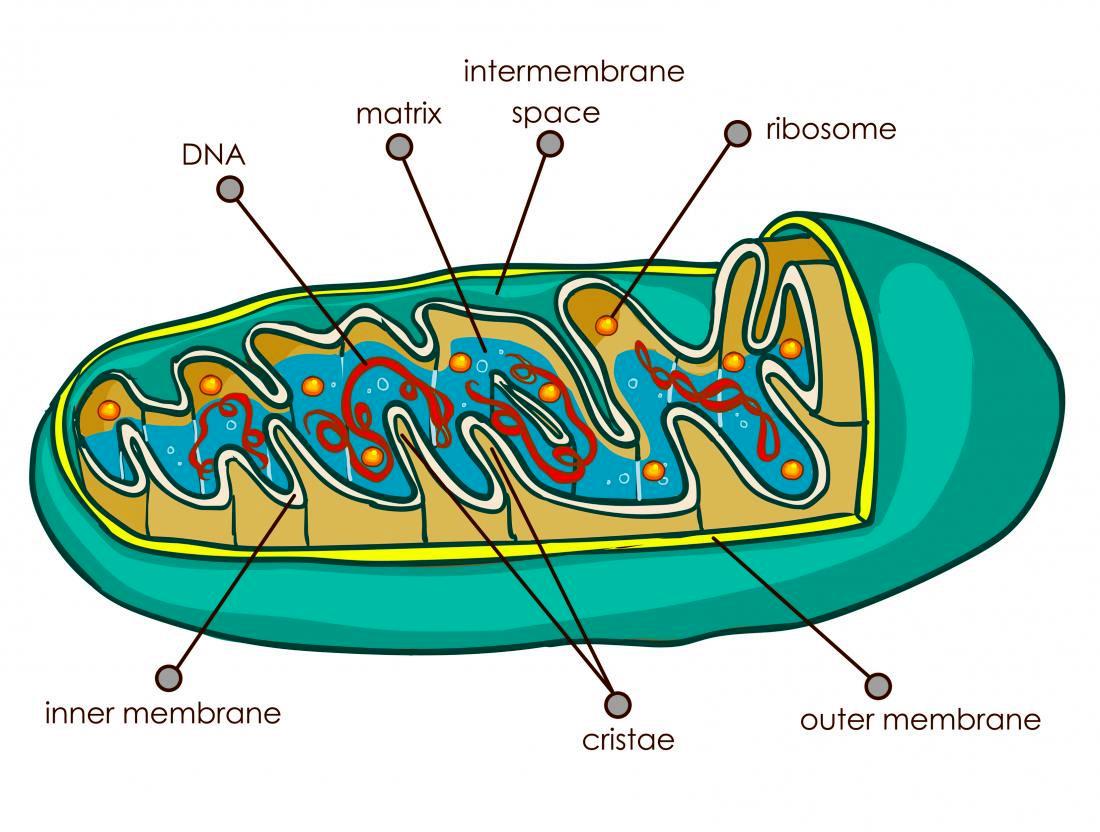The Application of mtDNA Research in Horses
By Michael Bowling. ©Michael Bowling, 2002. All Rights Reserved.
http://www.tbheritage.com/GeneticMarkers/mtdnaintbBowling.html
Featured Image: Basic diagram of a mitochondrion
This simplified guide to the language of genetics was prepared for Thoroughbred Heritage by geneticist Michael Bowling. Mr. Bowling and his wife, Dr. Ann Bowling, co-authored the first studies of the practical application of mtDNA analysis to horses, specifically Arabians.
Mitochondrial DNA (mtDNA) codes for some of the proteins of the mitochondria, the “energy furnaces” essential for cellular respiration and thus for multicelluar life. Mitochondria reside in the cell’s cytoplasm, not in its nucleus, which means mtDNA is transmitted independent of the nuclear chromosomes. Specific molecular mechanisms exist to exclude the sperm’s mitochondria from contributing to the developing embryo, so sequencing mtDNA makes possible the reconstruction of dam line relationships, without influence from the sires used over the generations.
An advantage of mtDNA testing is that, in sharp contrast to nuclear genes, it can be applied even at many generations’ remove to address questions of maternity, provided direct female line descendants of the animals in question are available. The origin of replication or the “D loop,” where the DNA polymerase enzyme binds, has been found to mutate more freely than the coding regions which are very highly constrained by natural selection (most mutations in coding regions result in lessened function and thus in selection against defective mitochondria). For this reason it is also known as the “hypervariable region” of the mitochondrial chromosome.
Within historical stud book time frames, mtDNA sequence appears to be highly stable; for example, multiple living descendants tested to date of the three daughters of the Arabian RODANIA (ROSE OF JERICHO 1883, ROSE OF SHARON 1885 and ROSEMARY 1886) have possessed the same hypervariable-region mtDNA sequence. A minority of families has shown variation to the extent of a single base change within stud book time frames, but at the current state of knowledge a difference of two or more mutational changes is taken to reflect a difference in maternal origin.
Mitochondrial sequences can also be used over evolutionary time frames and compared to relational trees derived from other traits. It has been shown that mtDNA variation reflects some connections which must date back before domestication; thus while a difference in mtDNA haplotype must be explained as a difference in origin, showing a matching haplotype may reflect either a pre-domestication event or a common historical origin. Mitochondrial DNA matches therefore are best interpreted in the light of historical research.
A Few Definitions
Matriline: the direct dam line, “bottom of the pedigree.”
Haplotype: a set of genetic variants inherited as a unit
Cladistics: system of reconstructing evolutionary relationships putting greatest emphasis on “shared derived” characters; a clade is an evolutionary line so defined, and a cladogram is a diagram showing cladistic relationships.
http://www.tbheritage.com/GeneticMarkers/mtdnaintbdamlines.html
http://www.tbheritage.com/GeneticMarkers/mtdnaintbdamlines2.html
http://www.tbheritage.com/GeneticMarkers/mtdnaintbdamlines3.html
http://www.tbheritage.com/GeneticMarkers/mtdnaintbdamlines4.html










